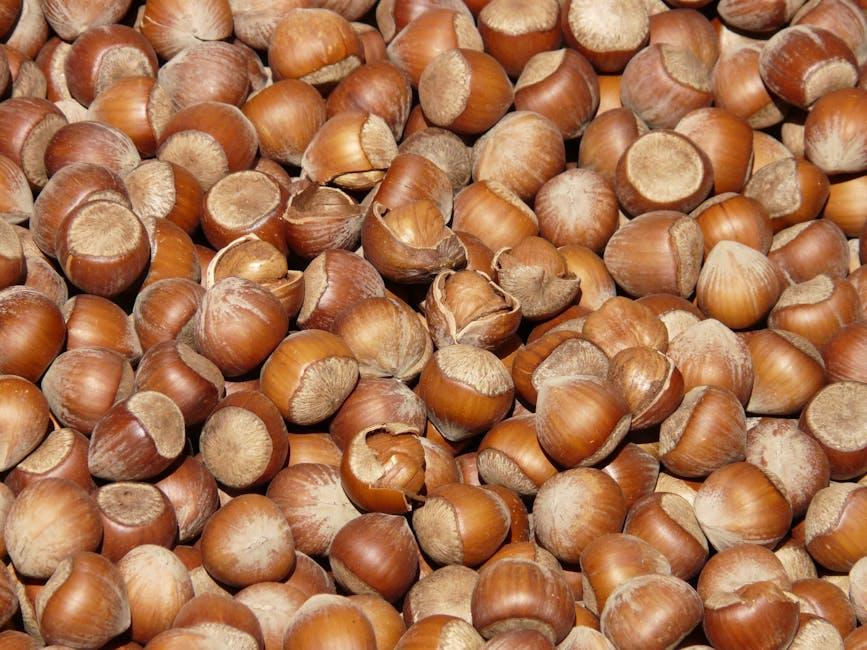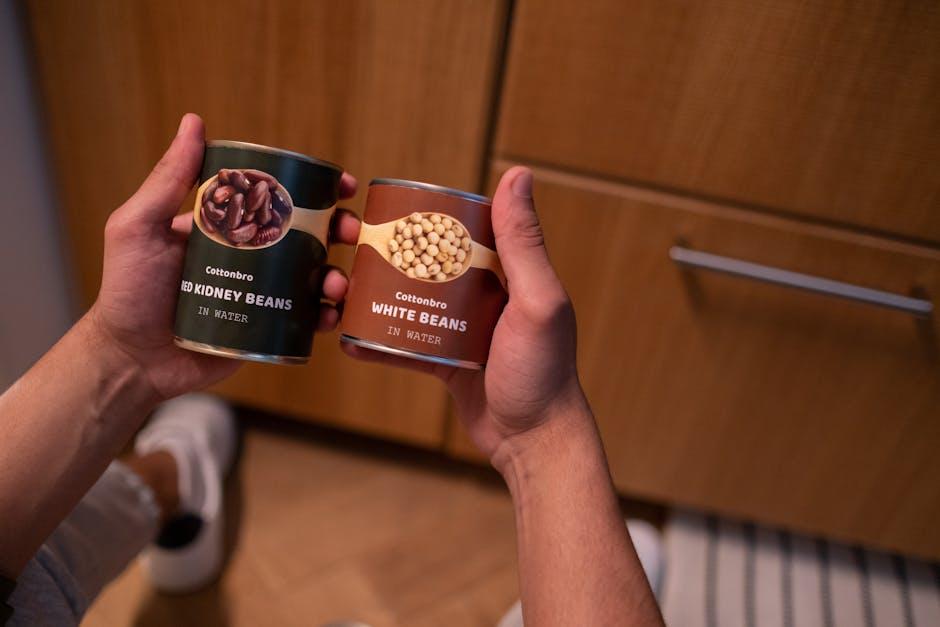Embarking on the GAPS (Gut and Psychology Syndrome) diet can feel like stepping into a new world—one where every ingredient carries the promise of healing and every shopping trip requires a fresh perspective. For beginners, grocery shopping transforms from a routine chore into a carefully curated quest to nourish the gut and support overall well-being. This guide aims to simplify that journey, offering practical tips and insightful advice to help newcomers navigate the aisles with confidence, making ingredient choices that align with the GAPS principles and set the stage for success. Whether you’re deciphering labels or selecting the freshest produce, these shopping strategies will pave the way to a healthier pantry and a happier gut.
Table of Contents
- Understanding the Fundamentals of the GAPS Diet for Smart Shopping
- Choosing Whole and Nutrient-Dense Foods to Support Gut Health
- Navigating the Grocery Store Aisles with a GAPS-Friendly Mindset
- Budget-Friendly Strategies for Sourcing Quality Ingredients
- Essential Pantry Staples to Keep on Hand for GAPS Meal Prep
- Q&A
- To Wrap It Up

Understanding the Fundamentals of the GAPS Diet for Smart Shopping
Embracing the GAPS diet means aligning your grocery list with nutrient-dense, easy-to-digest foods that support gut health. Focus on sourcing fresh, organic vegetables, grass-fed meats, wild-caught fish, and fermented foods like sauerkraut or kefir—these staples help replenish your microbiome and reduce inflammation. To save time and ensure quality, shopping at local farmers’ markets or trusted health food stores can provide the freshest picks, often at better prices. Remember, the GAPS diet emphasizes homemade broths and fermented products, so prioritize ingredients that allow you to prepare these at home for maximum healing benefits.
Smart shopping also involves strategizing your pantry to avoid impulse buys that conflict with GAPS principles. Here are key elements to keep handy:
- Grass-fed, pastured meats: beef, chicken, lamb, and pork
- Non-starchy vegetables: spinach, zucchini, broccoli, and cauliflower
- Fermented foods: homemade yogurt, kimchi, and bone broth
- Healthy fats: coconut oil, ghee, and olive oil
- Natural sweeteners: raw honey and stevia (sparingly)
| Category | Shelf Life | Best Storage Tip |
|---|---|---|
| Fermented Vegetables | 2-3 months (refrigerated) | Keep sealed and cool |
| Bone Broth | 5 days (fridge), 6 months (freezer) | Freeze in portions |
| Grass-fed Meat | 3–5 days (fridge), 3–6 months (freezer) | Vacuum seal for freshness |

Choosing Whole and Nutrient-Dense Foods to Support Gut Health
When beginning the journey to improve gut health, focusing on whole, nutrient-dense foods is crucial for promoting a balanced digestive system. Opt for fresh, organic vegetables like leafy greens, carrots, and zucchini, which are rich in fiber and antioxidants that nourish gut flora. Incorporate high-quality proteins such as grass-fed beef, free-range poultry, and wild-caught fish to support tissue repair and immune function. These foods provide essential nutrients that aid in rebuilding the gut lining and reducing inflammation. Avoid processed items, as they often contain additives and sugars that can disrupt your gut microbiome balance.
In your shopping list, prioritize ingredients that offer natural probiotic benefits and promote healing, such as fermented vegetables, bone broth, and gelatin-rich cuts of meat. These choices help replenish beneficial bacteria and provide the glutamine and collagen necessary for gut restoration. Here are some smart options to include:
- Fermented foods: sauerkraut, kimchi, and coconut yogurt
- Bone broth: homemade or high-quality store brands
- Healthy fats: avocado, olive oil, and ghee
- Low-sugar fruits: berries, green apples, and lemons
| Food Group | Gut Health Benefit | Example Foods |
|---|---|---|
| Vegetables | Provides fiber for gut flora nourishment | Spinach, carrots, zucchini |
| Proteins | Supports tissue repair | Grass-fed beef, wild fish |
| Fermented Foods | Boosts probiotics | Sauerkraut, kimchi |
| Bone Broth | Heals gut lining with collagen | Homemade broth |

Navigating the Grocery Store Aisles with a GAPS-Friendly Mindset
When shopping with a GAPS diet in mind, it’s essential to approach each aisle as an opportunity to find nourishing, healing ingredients rather than just ticking off a checklist. Start by focusing your trip around the perimeter of the store where fresh produce, meats, and dairy products typically reside. Here, you’ll want to prioritize organic or pasture-raised options—these are cornerstone ingredients for the GAPS diet, supporting gut health and overall vitality. Make sure to read labels carefully, avoiding any items that contain processed oils, starches, or sugars that could disrupt your gut lining.
Keep these go-to items on your grocery list as staples:
- Grass-fed meats and bone broth for gut repair
- Organic vegetables, especially leafy greens and fermented options
- Raw, cultured dairy like homemade kefir or yogurt
- Healthy fats such as coconut oil and ghee
- Herbal teas and natural sweeteners like raw honey
| Section | GAPS-Friendly Choices | Items to Avoid |
|---|---|---|
| Produce | Organic leafy greens, garlic, onions | Conventional produce sprayed with pesticides |
| Meat & Dairy | Grass-fed beef, raw cheese, homemade yogurt | Processed meats, pasteurized milk, lunch meats |
| Pantry | Coconut oil, homemade fermented veggies | Refined flours, sugars, industrial seed oils |

Budget-Friendly Strategies for Sourcing Quality Ingredients
Finding affordable, high-quality ingredients doesn’t have to drain your wallet, even when starting the GAPS diet. Begin by prioritizing staple items that offer versatility across multiple recipes, such as pasture-raised eggs, bone broth, and fresh seasonal vegetables from local farmers’ markets. These sources often provide superior quality at a fraction of the cost compared to specialty health stores. Additionally, buying in bulk can help save money on nuts, seeds, and fermented foods. Don’t overlook discount or outlet stores where you can occasionally snag high-grade meats or organic produce at reduced prices.
Smart shopping strategies also include leveraging technology and community connections. Use apps and websites that track grocery sales or offer coupons tailored to organic and natural food products. Join local food co-ops or community-supported agriculture (CSA) programs, which often offer affordable memberships for regular boxes of fresh and nutrient-dense ingredients. Below is a quick breakdown of cost-saving sourcing options to help guide your next shopping trip:
| Source | Benefits | Tips |
|---|---|---|
| Farmers’ Markets | Fresh, seasonal produce at competitive prices | Visit near closing time for discounts |
| Bulk Stores | Lower cost per unit for nuts, seeds, dried fruits | Store in airtight containers to extend freshness |
| CSAs / Food Co-ops | Community-supported, often organic and diverse | Share a box or split membership with family |
| Discount Grocery Outlets | Reduced prices on meat, dairy, and pantry staples | Check sell-by dates and buy for immediate use or freezing |

Essential Pantry Staples to Keep on Hand for GAPS Meal Prep
Building a well-stocked kitchen tailored for the GAPS diet doesn’t have to be overwhelming. Start by prioritizing nutrient-dense, whole foods that form the foundation of most meals. Keep an ample supply of organic bone broth and grass-fed meats, as they are crucial for gut healing and provide rich proteins and minerals. Don’t overlook fermented foods like homemade sauerkraut or
Organizing your pantry with versatile ingredients makes GAPS meal prep easier and more enjoyable. Here are some essentials to keep on hand:
- Raw, unprocessed honey for natural sweetness and antimicrobial benefits
- Coconut oil and olive oil as primary cooking fats
- Ground spices such as turmeric, ginger, and cinnamon for flavor and inflammation support
- Gelatin powder to enrich broths and desserts
- Herbal teas like chamomile and peppermint to soothe digestion
| Staple | Purpose | Storage Tip |
|---|---|---|
| Bone Broth | Gut healing, mineral boost | Freeze in ice cube trays for portion control |
| Fermented Vegetables | Probiotic support | Store in glass jars in cool, dark place |
| Coconut Oil | Cooking medium and skin health | Keep in a sealed container at room temp |
Q&A
Q&A: Grocery Shopping Tips for GAPS Beginners
Q1: What is the GAPS diet, and why does it require special grocery shopping?
A1: The GAPS diet focuses on gut health by eliminating processed foods, sugars, and grains, emphasizing homemade, nutrient-dense meals. Grocery shopping for GAPS beginners means choosing fresh, whole foods and avoiding packaged items that contain additives or hidden sugars.
Q2: How can beginners prepare for their first GAPS grocery trip?
A2: Start with a meal plan outlining breakfast, lunch, dinner, and snacks for a week. Make a detailed shopping list based on this plan, focusing on fresh vegetables, quality meats, fish, eggs, fermented foods, and homemade dairy products like fermented yogurt or kefir.
Q3: Which foods should GAPS beginners prioritize in the grocery store?
A3: Look for organic, grass-fed meats, free-range poultry, wild-caught fish, fresh non-starchy vegetables, fermented foods like sauerkraut and kimchi, bone broth ingredients, and healthy fats such as coconut oil, olive oil, and ghee.
Q4: Are there any tricky ingredients that GAPS beginners should watch out for?
A4: Yes, many processed foods contain hidden sugars, starches, or preservatives that are not GAPS-friendly. Always read labels carefully—avoid items with maltodextrin, dextrose, and other hidden carbs.
Q5: Can GAPS beginners buy snacks from the store, or should they make everything at home?
A5: While homemade snacks are ideal, some stores carry GAPS-appropriate options like plain nuts, seeds, and fermented vegetables. However, it’s best to prepare snacks at home to control ingredients fully.
Q6: How important is shopping seasonally and locally on the GAPS diet?
A6: Very important! Seasonal, local produce tends to be fresher, more nutrient-dense, and environmentally friendly. It also supports sustainable farming, which aligns well with the GAPS philosophy.
Q7: Any tips for budgeting while shopping for GAPS-friendly foods?
A7: Buy in bulk when possible, especially staples like bone broth bones and nuts. Utilize farmer’s markets for fresh produce, prioritize cuts of meat that are nutritious but less expensive (like organ meats), and plan meals around sales and seasonal availability.
Q8: How can GAPS beginners make the grocery shopping experience less overwhelming?
A8: Keep it simple! Stick to your list, shop with a clear goal, avoid aisles with processed foods, and don’t hesitate to ask store employees or local farmers for help finding specific items. Over time, familiarizing yourself with GAPS-approved foods will make shopping easier and more enjoyable.
To Wrap It Up
Embarking on your GAPS journey can feel like navigating a new world of flavors, ingredients, and shopping routines. By approaching your grocery trips with intention and these beginner-friendly tips, you’ll find the aisles transforming from overwhelming to inspiring. Remember, each carefully chosen item is a step toward healing and nourishing your body. As you stock your pantry with wholesome essentials, let curiosity and patience guide your path—because every meal is an opportunity to reconnect with vibrant health. Happy shopping, and here’s to thriving on your GAPS adventure!














Leave feedback about this